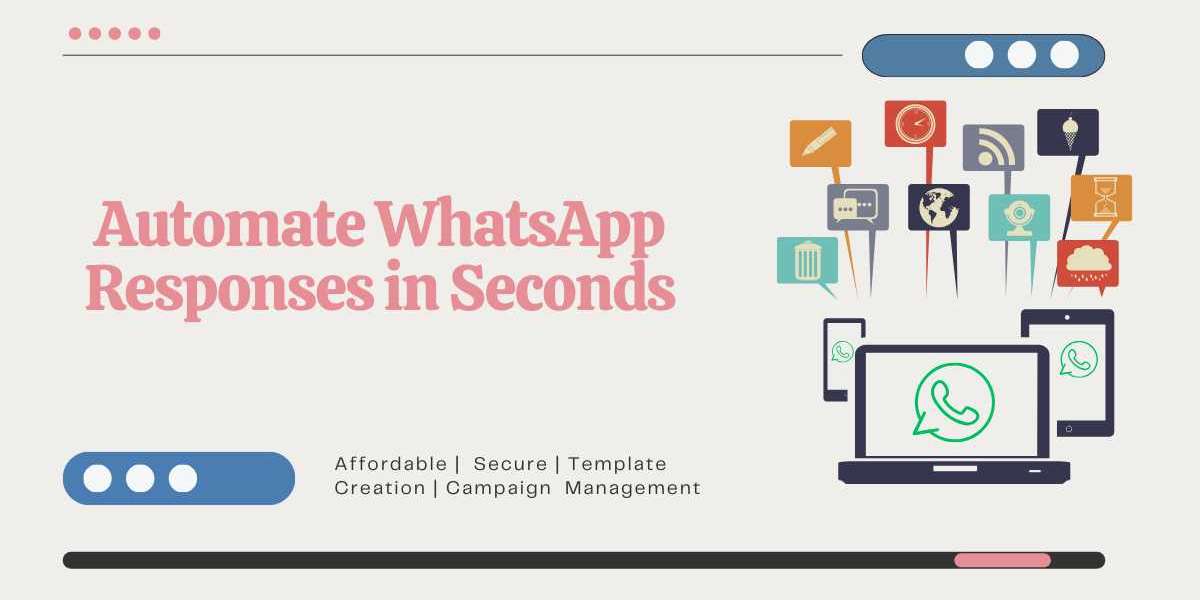Why Automate WhatsApp Responses?
Before we dive into the "how," let’s first understand why automation is so beneficial.
- Time-Saving: Automating responses means you don’t have to manually reply to every single message, especially when you’re dealing with repetitive inquiries.
- 24/7 Availability: With automation, you can ensure that your customers or contacts receive instant replies, no matter the time of day. This is especially important for businesses with global customers in different time zones.
- Consistency: Automated replies ensure that your messaging is consistent. You can preset messages that reflect your brand tone and avoid inconsistencies in your responses.
- Improved Customer Experience: Instant responses show customers that you’re attentive and care about their inquiries. This can lead to higher satisfaction and engagement.
- Focus on What Matters: By automating simple tasks, you can focus on more important and complex interactions, improving overall productivity.
Tools and Methods to Automate WhatsApp Responses
There are several tools and methods available to automate WhatsApp messages. Whether you want a simple "out-of-office" reply or more complex chatbot interactions, here are some of the most popular options.
1. WhatsApp Business App (Free)
WhatsApp offers a Business version of the app, specifically designed for small businesses to connect with customers more efficiently. One of the key features is the ability to set automated messages.
- Greeting Message: You can set a greeting message to welcome new customers or contacts when they first reach out to you. This is a great way to make a positive first impression.
- Quick Replies: If you find yourself answering the same questions over and over again, quick replies are a lifesaver. You can create short-cuts for common answers to frequently asked questions like "What are your business hours?" or "How can I place an order?"
- Away Message: You can set an "away message" when you're unavailable, ensuring that your contacts know when to expect a response. This is particularly useful outside of working hours.
2. Third-Party Automation Tools (Advanced Features)
For businesses looking to scale up and offer more advanced automation, third-party tools come in handy. These platforms often offer more customization, such as creating personalized responses, integrating with CRMs, and automating entire workflows.
- Twilio API: Twilio provides a cloud communication platform that allows businesses to send and receive messages over WhatsApp. With the Twilio API, you can integrate WhatsApp into your existing customer service workflows, automating responses based on keywords or message types.
- Zoko: Zoko offers a full suite of WhatsApp automation tools, including automated replies, scheduling messages, and even setting up WhatsApp bots that can handle inquiries 24/7.
- Anlook: Anlook is another powerful automation tool for WhatsApp, designed to help businesses with customer support, lead generation, and marketing campaigns. It includes features like automated workflows, chatbots, and integrations with popular CRM tools.
- Chatbots: For a more sophisticated solution, consider using a chatbot specifically designed for WhatsApp. These bots can respond to a variety of queries, guide customers through the sales process, and even handle basic troubleshooting—all without the need for human intervention.
3. Using WhatsApp Web Automation Scripts
For tech-savvy individuals or businesses with developers on hand, automating WhatsApp responses using WhatsApp Web and automation scripts (such as Python) is also an option. These scripts allow you to programmatically send responses based on specific conditions, such as keywords or time triggers.
While this method requires more technical know-how, it can be highly customizable and cost-effective, especially for businesses with unique needs.
Step-by-Step Guide to Set Up Automated WhatsApp Responses Using the WhatsApp Business App
For small businesses or individuals who don’t need complex automation, setting up automated messages using the WhatsApp Business app is simple and effective. Here’s how you can do it:
Step 1: Download the WhatsApp Business App
If you haven’t already, download the WhatsApp Business app from the Google Play Store or Apple App Store. It's free to use and available for both Android and iOS.
Step 2: Set Up Your Profile
Fill out your business information, including your business name, logo, and contact details. This will help your customers recognize your account.
Step 3: Create Automated Messages
- Greeting Message:
- Open WhatsApp Business and go to "Settings" "Business Tools" "Greeting Message."
- Toggle the option to send a greeting message when someone first contacts you.
- Customize the message to say something like, “Hi there! Thank you for reaching out to [Your Business Name]. How can we assist you today?”
- Away Message:
- Go to "Settings" "Business Tools" "Away Message."
- Turn on the Away Message and set the time frame for when it should be active (e.g., outside working hours).
- Customize your message with something like, “Thanks for reaching out! We are currently unavailable but will get back to you during our business hours.”
- Quick Replies:
- In "Settings," go to "Business Tools" "Quick Replies."
- Tap on the "+" sign to add a new quick reply, then create a shortcut for a common response. For example, “/hours” could trigger a reply like, “Our business hours are 9 AM to 6 PM, Monday through Friday.”
Step 4: Test Your Automated Responses
After setting up your automated messages, it's important to test them. Send a message to your WhatsApp business account and check that your greeting, away message, and quick replies are functioning correctly.
Step 5: Monitor and Adjust
Automation is not a "set it and forget it" process. Regularly monitor your automated responses to ensure they remain relevant, and adjust them as needed based on customer feedback and changing business needs.Know more about the top features of whatsapp api read this blog: Top Features of WhatsApp Automation Tools
Best Practices for WhatsApp Automation
- Keep it Personal: Even though the responses are automated, try to keep them personal and conversational. Avoid sounding too robotic or generic.
- Offer Clear Instructions: Let your contacts know how they can reach a human if needed. For instance, “If you need further assistance, simply type ‘help,’ and our team will assist you.”
- Be Transparent: Don’t mislead customers into thinking they’re speaking with a real person if they’re interacting with a bot or automated system.
- Segment Your Messages: If you have different types of customers or contacts (e.g., existing customers vs. new inquiries), segment your messages to ensure they’re relevant to each audience.
Conclusion
Automating WhatsApp responses is a game-changer for improving communication efficiency. By using the right tools, whether it's WhatsApp’s built-in features or third-party solutions, you can quickly and easily set up automated replies that save time, improve customer experience, and help your business run smoothly.
The best part? It only takes a few minutes to get started, and the benefits will be felt almost immediately. So, why wait? Automate your WhatsApp responses today and experience the difference!











